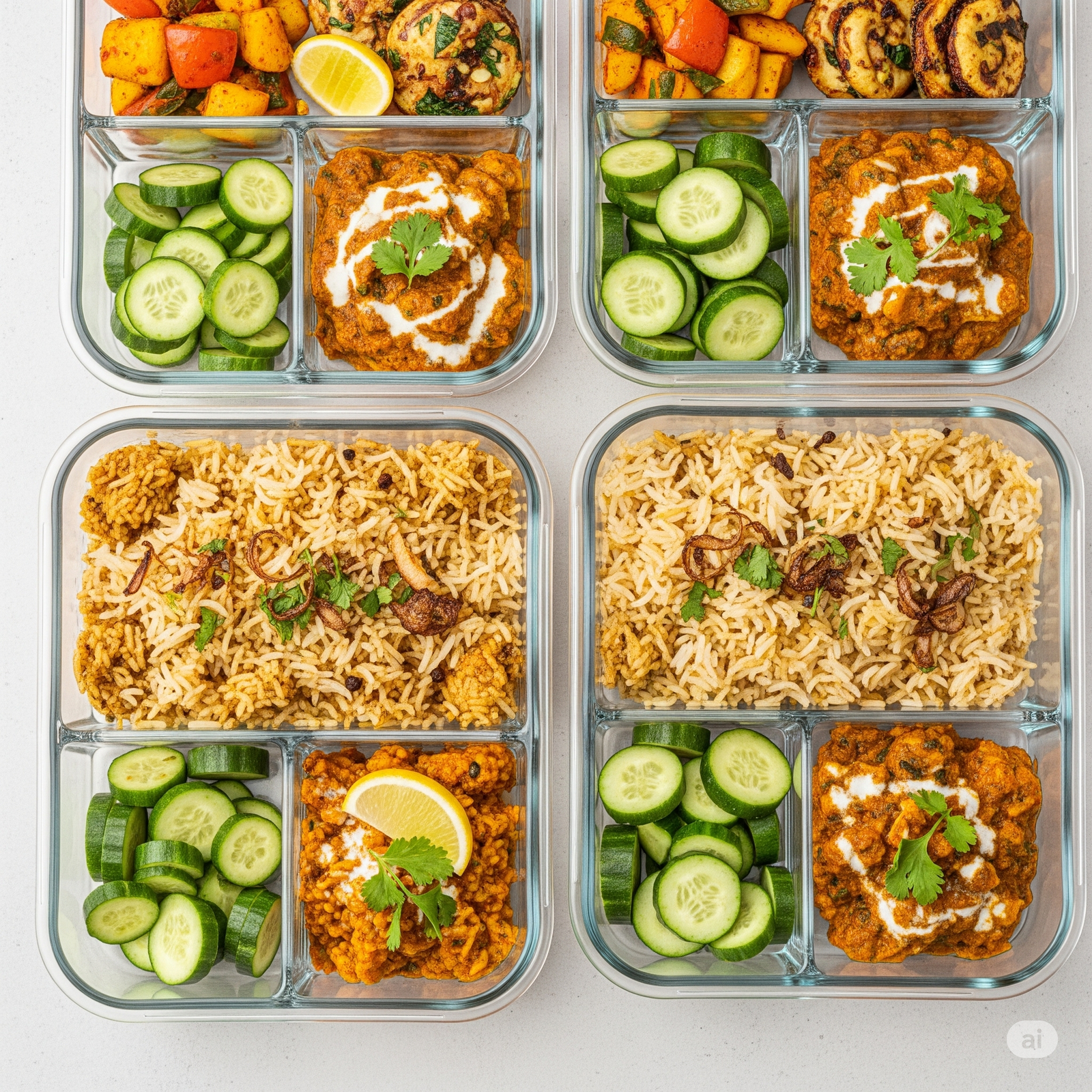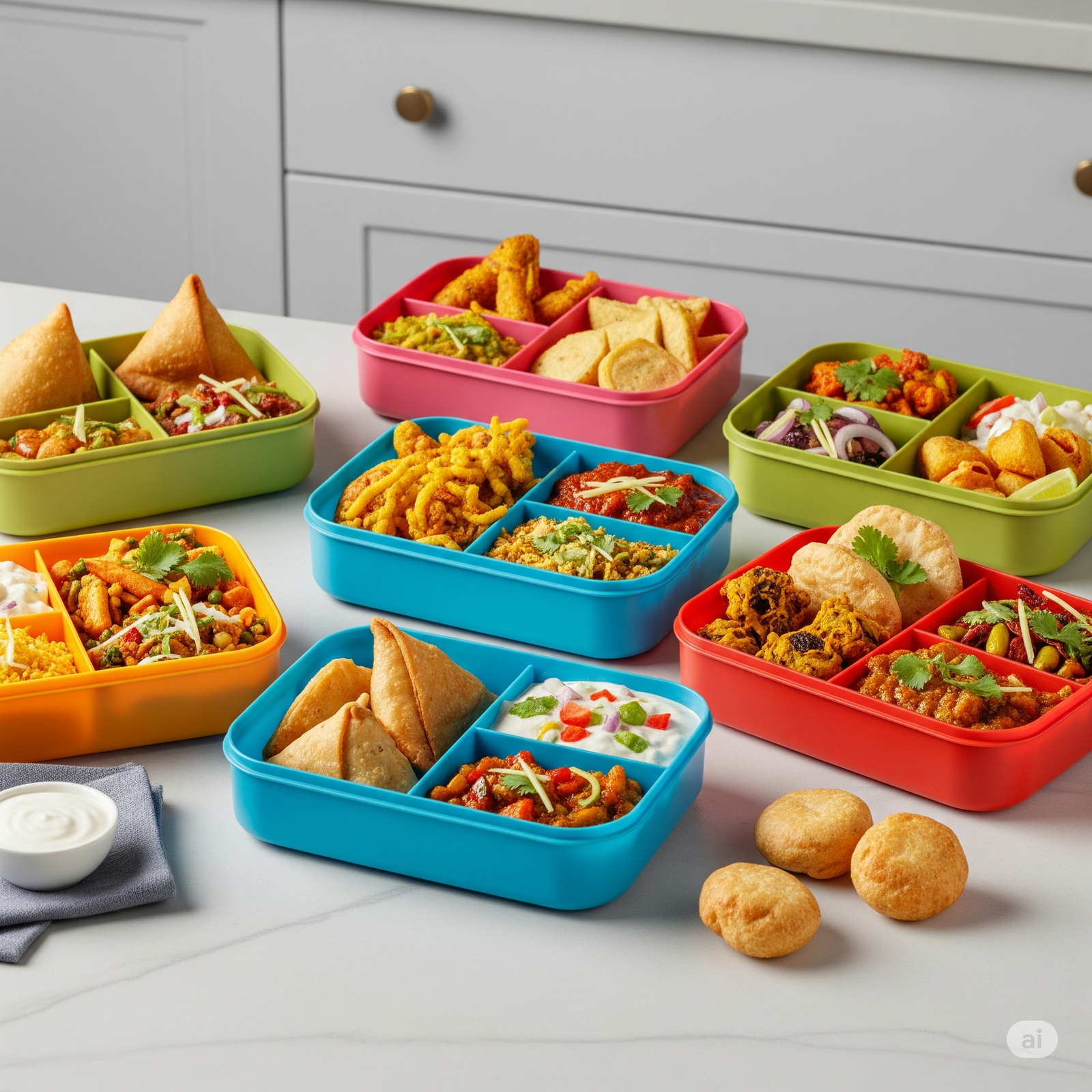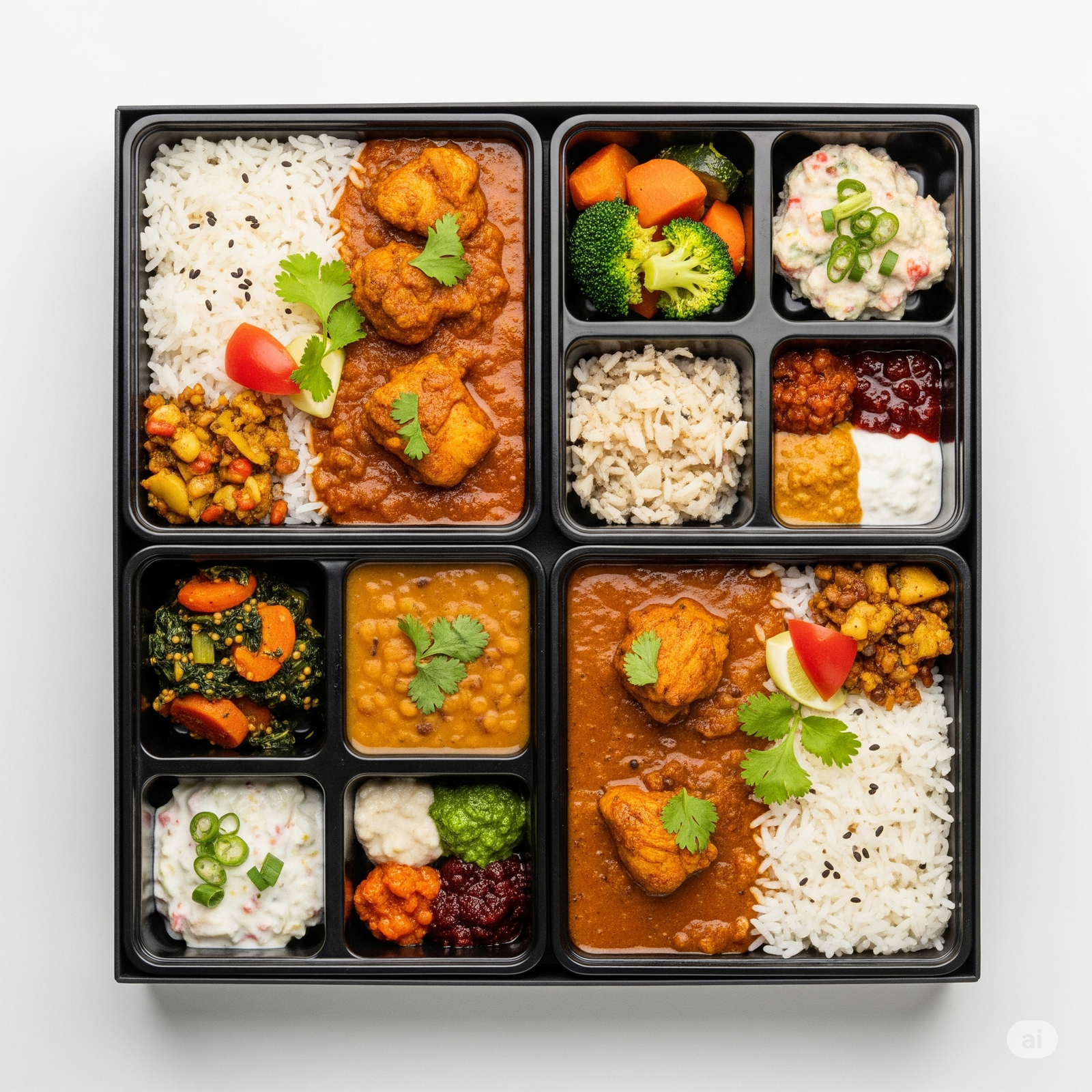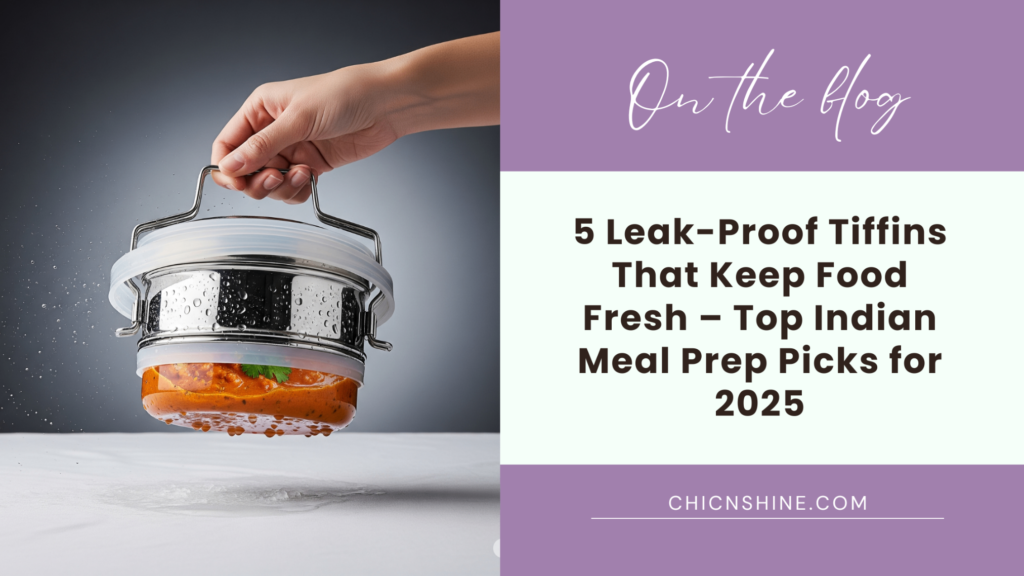If you’ve ever opened your lunchbox to find curry seeping into your bag—or worse, your rotis turned to rubber—you know the pain. After five years of meal-prepping Indian food, I’ve learned this truth: most Western-style containers simply don’t get it. They can’t handle our oily gravies, our turmeric stains, or the sacred separation of dal from sabzi. So, I went on a mission to find the real MVPs of Indian food storage. These 5 leak-proof tiffins have survived biryani, sambar, and cross-country train rides—and lived to tell the tale.
Why Regular Containers Just Don’t Work
Indian food isn’t polite. It’s bold, fragrant, and frequently soaked in spice-laced oil. That’s a nightmare for flimsy plastic lids and shallow, one-compartment boxes. Regular containers weren’t designed for the complexity of our meals: one dish stains, one leaks, one smells for days.
What we need:
- Real sealing: for gravies and chutneys that behave badly
- Multiple compartments: because no one wants rasam-flavored chapati
- Durability: because turmeric laughs in the face of plastic
I learned the hard way: just because something is labeled “airtight” doesn’t mean it can survive butter chicken.
Top 5 Leak-Proof Tiffins for Indian Food (Tested in Real Life)
1. Stainless Steel Multi-Tier Tiffin – The Classic, Reinvented
Still unbeatable. This is your grandmother’s lunchbox with a 2025 upgrade—modern versions now come with silicone gaskets and interlocking lids that actually seal. No more masala puddles at the bottom of your backpack.
- Best for: Full thali meals
- Why it works: Long-lasting, stain-proof, keeps food warm longer
- Pro tip: Pre-warm with hot water before packing to retain heat
Amazon Suggestion: Milton Thermosteel Tiffin Set with Vacuum Insulation

2. Glass Compartment Containers – The Microwave MVP
When it comes to reheating saucy dal without your lunch smelling like melted Tupperware, glass is your best friend.
These sleek, durable containers are ideal for:
-
Office lunches
-
Batch cooking
-
Anyone who likes to see their food without opening 7 lids
Best For:
-
Freezer-to-microwave meal prep
-
People who care about food freshness & presentation
Why It Works:
-
Doesn’t stain from turmeric or masala
-
Snap-lock lids prevent any curry escape disasters
-
Dishwasher safe, and heats evenly in the microwave
⚠️ Yes, it’s a bit heavier than plastic. But if you value flavor, freshness, and dignity—it’s worth it.

3. Silicone-Sealed Plastic Tiffins – The Budget Lifesaver
Plastic gets a bad rap—and a lot of it’s deserved. But if you pick the right kind, it can be a solid option, especially for students, kids, or budget meal preppers.
The secret sauce? Thick silicone seals + BPA-free materials.
Best For:
-
Everyday use without guilt if you lose one
-
Kids’ tiffins and lightweight travel lunches
Why It Works:
-
Airtight silicone seals keep curries and sabzis in their lane
-
Much lighter than glass or steel
-
Way cheaper—perfect for families or backup containers
⚠️ Downside? It can stain over time. But baking soda scrubs + lemon sun baths = problem solved.

4. Vacuum-Insulated Thermal Containers – The Heat Lock Master
These are not your average lunch boxes. They’re engineered like hot food vaults, and they actually work.
Discovered during my 6 AM breakfast-packing days, these containers keep your rotis, parathas, or rice warm for 6–8 hours—without reheating.
Best For:
-
Long workdays, train commutes, or no-access-to-microwave situations
-
Hot rotis and rice that don’t taste like cardboard by noon
Why It Works:
-
Double-walled insulation preserves heat and moisture
-
Wide-mouth opening fits full-size Indian flatbreads
-
Great for single-meal setups (but not multiple items)
It’s a one-container showstopper. Not cheap, but worth every rupee for heat freaks.
- Read More – The Busy Indian Woman’s Meal Prep Bible

5. Bento-Style Compartment Boxes – The Portion Pro
Indian food meets Japanese lunchbox. If you’re the type who needs everything separate, organized, and Instagrammable—this one’s for you.
Best For:
-
Portion control, macro-tracking, and visual eaters
-
Meal-prepping mixed thali-style meals
Why It Works:
-
Built-in compartments = no leaking flavors, no soggy rotis
-
Ideal for keeping sabzi, dal, rice, chutneys all separate
-
Some come with removable dividers = major flexibility
Bonus: Kids love them. Adults with lunch aesthetic goals love them more.

Essential Features to Look For
Through extensive testing and daily use, I’ve identified several non-negotiable features that distinguish exceptional meal prep containers for Indian food from mediocre options. First and foremost, leak-proof sealing is critical. Indian cuisine often involves gravies, oils, and liquid components that will find any weakness in container design. Look for containers with silicone gaskets, multiple locking points, or screw-on lids that create genuine airtight seals.
Material selection significantly impacts both food quality and container longevity. Stainless steel resists staining and odor absorption while providing excellent thermal properties. Glass offers similar benefits with the added advantage of microwave safety and visual appeal. If choosing plastic, ensure it’s BPA-free and preferably made from polypropylene, which resists staining better than other plastic types.
Size and compartment configuration should align with your typical Indian meal structure. Consider whether you prefer single large compartments for mixed dishes like biryani, or multiple smaller sections for thali-style presentations. The container capacity should match your appetite and nutritional goals while remaining practical for transportation and storage.
Storage and Maintenance Tips
Proper care extends the life of your containers while maintaining food safety and quality. I always allow hot food to cool to room temperature before sealing containers, which prevents condensation buildup that can lead to soggy textures and shortened food life. For particularly oily or heavily spiced dishes, I lightly coat the container interior with a thin layer of oil before adding food, which makes cleaning significantly easier.
Regular deep cleaning prevents odor buildup and staining. I soak containers in a solution of warm water, baking soda, and lemon juice monthly, which neutralizes odors and removes stubborn stains naturally. For plastic containers, avoiding high-temperature washing helps prevent warping and seal degradation over time.
Organization and rotation of containers ensure even wear and prevent any single container from bearing excessive use. I maintain a rotation system where recently cleaned containers go to the back of my storage area, encouraging the use of all containers in my collection and extending the overall lifespan.
Addressing Common User Concerns
Based on community discussions from Reddit’s meal prep forums and Quora food storage threads, the most frequently asked questions revolve around leakage prevention and food safety. Many users share success stories about how proper meal prep containers have transformed their daily routines, while others express frustration with containers that failed during transportation.
Temperature retention concerns are particularly relevant for Indian food, where serving temperature significantly impacts taste and satisfaction. Users consistently report that investing in quality containers pays dividends in food quality, even when the initial cost seems high. The consensus among experienced meal preppers is that cheap containers ultimately cost more due to replacement needs and food waste from leakage or spoilage.
Staining and odor retention specifically trouble users who frequently prep turmeric-heavy dishes and strong-smelling foods like fish curries. The community strongly recommends glass or high-quality stainless steel for these applications, with many users sharing cleaning tips and maintenance strategies that keep containers looking and smelling fresh.
FAQs
Can I put hot Indian food directly into these containers?
I always let food cool to room temperature first. Hot food creates condensation that can make containers leak and affect food texture. Additionally, sudden temperature changes can damage some container materials and seals.
How do I prevent turmeric staining in my meal prep containers?
Glass and stainless steel resist staining best. For plastic containers, I coat them lightly with oil before adding turmeric-heavy dishes. Regular cleaning with baking soda and lemon juice also helps prevent permanent staining.
Which containers work best for liquid-heavy curries and dal?
Containers with silicone gaskets or screw-top lids provide the best leak protection. I prefer glass containers with locking lids for very liquid preparations, as they create the most reliable seal.
Are these containers safe for freezer storage?
Most quality containers handle freezer temperatures well, but always leave expansion room for frozen liquids. Glass containers should be freezer-safe specifically, and I avoid putting glass directly from the freezer to the microwave without gradual temperature adjustment.
Real User Questions from Online Communities
“Best containers for Indian lunch boxes that won’t leak in office bags” – Asked by u/MumbaiOfficeGoer on r/IndianFood
After dealing with countless curry disasters in my work bag, I can confidently say that glass containers with silicone-sealed lids are your best bet for office lunch transport. I use Pyrex Simply Store containers because they’ve never failed me, even with the sauciest gravies. The key is choosing containers with at least four locking points on the lid – this creates multiple seal barriers that prevent any possibility of leakage. I also recommend the “double-bag” method: place your sealed container inside a small insulated lunch bag as an extra precaution. This approach has saved my laptop and important documents multiple times when I was testing less reliable containers.
“Stainless steel vs glass for Indian food meal prep” – Popular discussion thread on Quora Food Storage
Having used both extensively, I believe the choice depends on your primary use case. Glass containers excel for microwave reheating and visual meal planning – I can see exactly what’s inside each container, which streamlines my weekly prep routine. Glass also handles acidic foods like tomato-based curries better without any metallic taste transfer. However, stainless steel wins for durability and thermal retention. My three-year-old steel tiffins still look brand new despite daily use, while my glass containers require more careful handling. For office workers who primarily microwave their meals, I recommend glass. For students or anyone who needs unbreakable containers, stainless steel is the clear winner.
“How to pack wet curries without spillage” – Frequently asked on r/MealPrepSunday
This question hits close to home because I’ve ruined several bags learning this lesson the hard way. My foolproof method involves three steps: First, I always let curries cool completely before packing – hot liquids expand and create pressure that can compromise even the best seals. Second, I fill containers only to about 80% capacity, leaving room for any expansion or movement during transport. Third, I use the “rice barrier” technique: I place a layer of rice at the bottom of the container, add the curry, and then top with more rice if needed. The rice absorbs excess liquid and creates a natural buffer that prevents sloshing. For extremely wet preparations like rasam or sambhar, I pack them in separate small containers and combine them just before eating.


